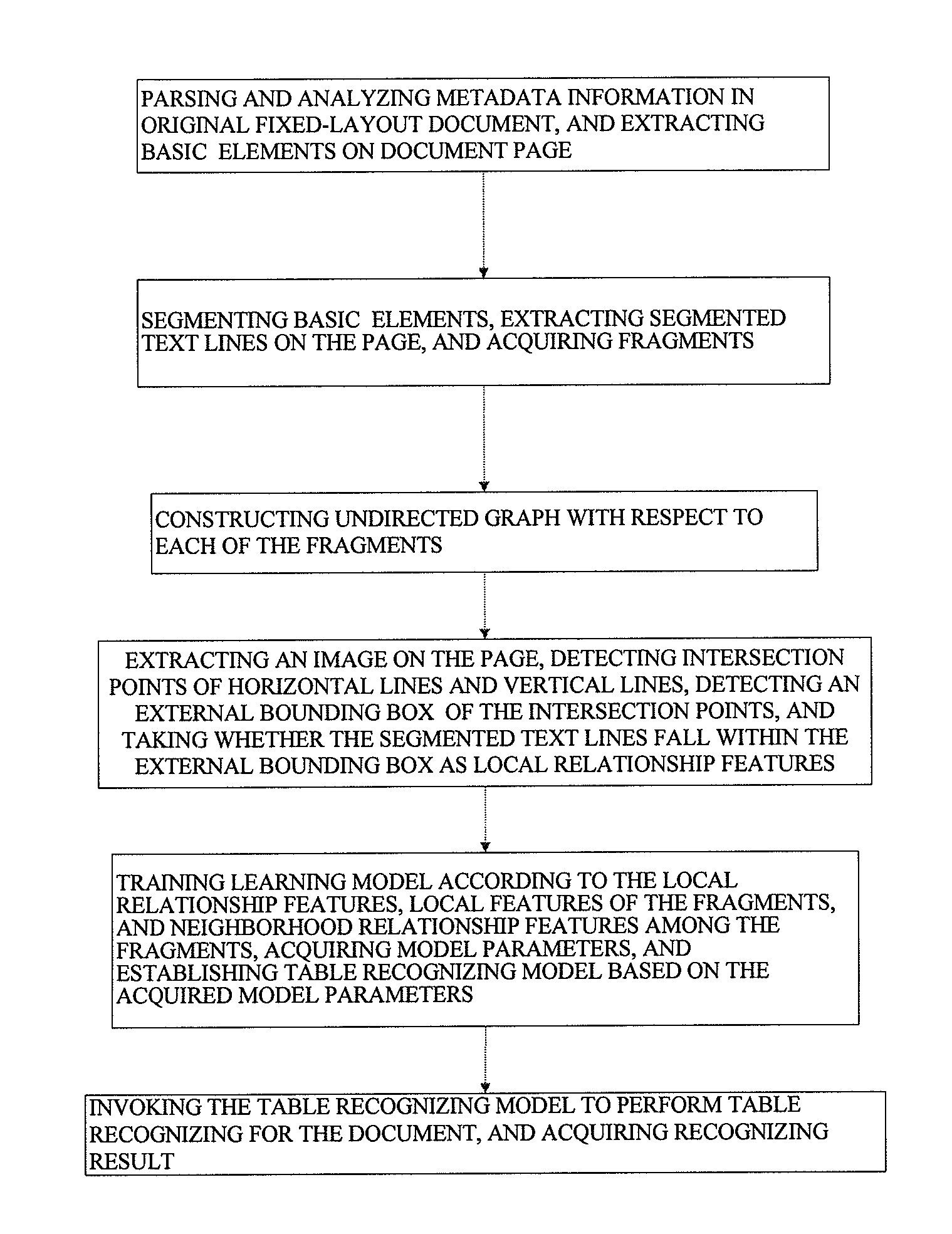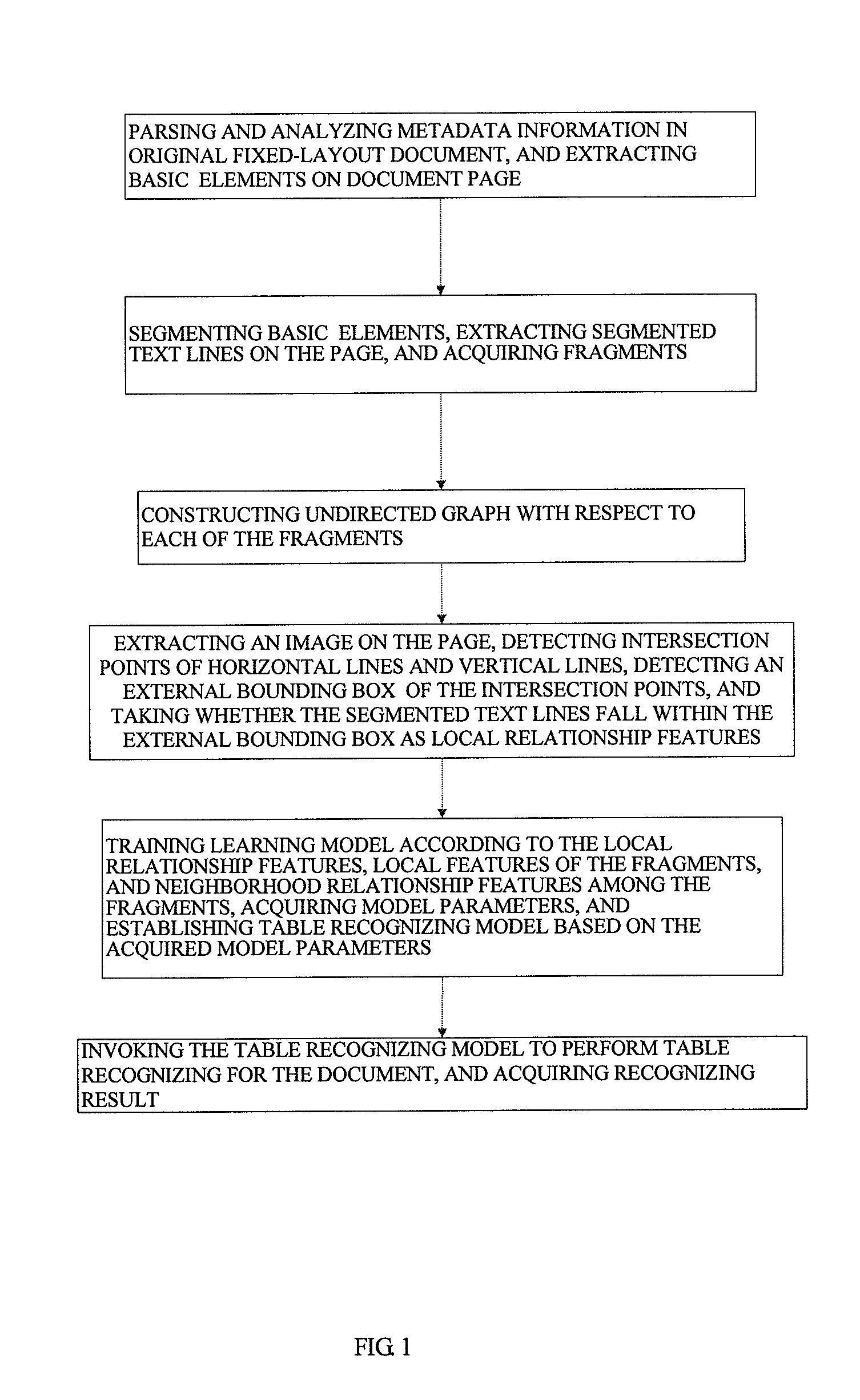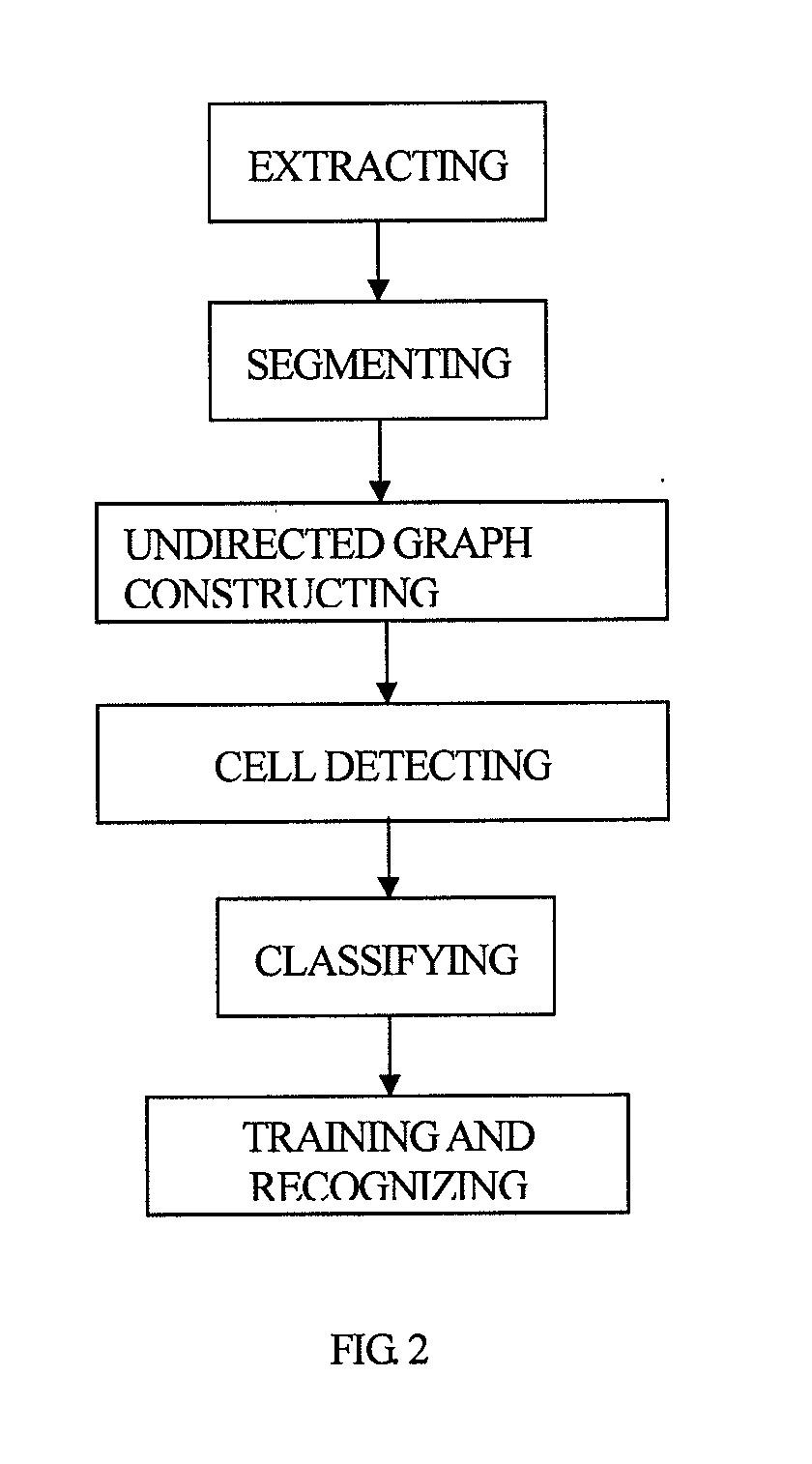Table recognizing method and table recognizing system
a table recognition and table technology, applied in the field of table recognition methods and table recognition systems, can solve the problems of recognizing the effect of the table with the actual requirements, the rule-based method may not recognize the border lines of the table with other logical blocks, and the difficulty of locating the practical table as an integrity, etc., to achieve the effect of high efficiency of feature extraction
- Summary
- Abstract
- Description
- Claims
- Application Information
AI Technical Summary
Benefits of technology
Problems solved by technology
Method used
Image
Examples
embodiment 1
[0057]This embodiment provides a table recognizing method, as illustrated in FIG. 1, comprising the following steps:
[0058](1) parsing and analyzing metadata information in an original fixed-layout document, and extracting basic elements on a page of the document; wherein basic elements on the page may be extracted using an analysis tool in the prior art; and the basic elements may comprise numerous text elements, image elements, and graphical operation information;
[0059](2) segmenting the basic elements, extracting segmented text lines on the page, and acquiring fragments; in this step, continuous texts are segmented into one fragment; wherein properties of the basic elements are segmented based on relationships between neighboring elements, and fragments are thus acquired; and the segmented text lines on the page are acquired based on clustering and by means of clustering analysis;
[0060](3) constructing an undirected graph with respect to each of the fragments; wherein the undirect...
embodiment 2
[0068]This embodiment provides a table recognizing system, comprising:
[0069]an extracting unit, configured to parse and analyze metadata information in an original fixed-layout document, and extract basic elements on a page of the document;
[0070]a segmenting unit, configured to segment the basic elements, extract segmented text lines on the page, and acquire fragments; wherein the segmented text lines on the page are extracted based on clustering; and continuous texts in the text lines may be segmented into one fragment.
[0071]a constructing unit, configured to construct an undirected graph with respect to each of the fragments; wherein the undirected graph with respect to the each of the fragments is constructed based on a minimal spanning tree;
[0072]a detecting unit, configured to extract an image on the page, detect intersection points of horizontal lines and vertical lines based on connected components, detect an external bounding box of the intersection points, and take whether ...
embodiment 3
[0078]FIG. 2 is a flowchart of a table recognizing method corresponding to the table recognizing system described in this embodiment, comprising the following steps:
[0079](1) Extracting: parsing metadata information in an original fixed-layout document using a parsing engine, and extracting basic elements on a page of the document, which comprise text elements, image elements, and graphic operations. The text elements comprise text code, font type, font color, and font size, and etc.; and the image elements comprise natural images and synthetic images; and the graphic operation graphic element information comprises operation information of drawing lines and drawing graphs and so on.
[0080](2) Segmenting: clustering the text elements, the image elements, and graphic operation elements, segmenting contents on a page, and acquiring fragments. Herein the segmented text lines are extracted based on clustering analysis, for example, an XY-cut method. The fragments are acquired according to...
PUM
 Login to View More
Login to View More Abstract
Description
Claims
Application Information
 Login to View More
Login to View More - R&D
- Intellectual Property
- Life Sciences
- Materials
- Tech Scout
- Unparalleled Data Quality
- Higher Quality Content
- 60% Fewer Hallucinations
Browse by: Latest US Patents, China's latest patents, Technical Efficacy Thesaurus, Application Domain, Technology Topic, Popular Technical Reports.
© 2025 PatSnap. All rights reserved.Legal|Privacy policy|Modern Slavery Act Transparency Statement|Sitemap|About US| Contact US: help@patsnap.com



